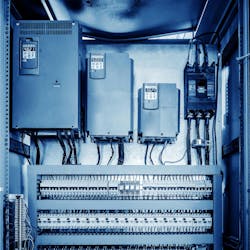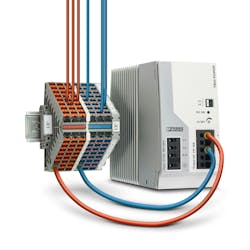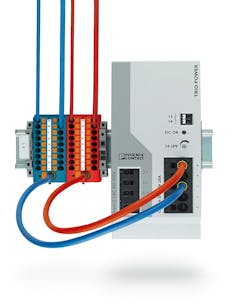More industrial automation products are created to be smaller and more compact, yet still achieve the same or even higher density level as before. Power supplies, relays, signal conditioners, you name it—all of them are becoming smaller to save space.
But what about the most fundamental and commonly found products in the control cabinet—connectivity products such as terminal blocks, distribution blocks and sensor/actuator blocks?
Over the past decade, industry has seen countless innovations within the connectivity portfolio designed to increase the density of wiring and shrink the overall footprint inside the cabinet. Whether through simplifying and condensing power distribution connections, organizing sensor wiring into a unique compact solution, or utilizing multi-connection and multi-level terminal blocks, there have been many innovative solutions introduced that are worthy of exploration.
Since nearly all products inside a control cabinet need power to function, it would be silly to think that each product gets its power from its own separate power source. Typically, a cabinet will have one power supply (or two for redundancy) that can feed power to all the components within a cabinet. To do so, the main power comes out of the power supply and into a bank of terminal blocks. These terminal blocks are then bridged to connect them electrically; then the output feeds the rest of the products downstream. This is known as power distribution.
While power distribution is nothing new, there has been some innovation recently in how to do it. Using a bank of terminal blocks could mean having 10, 15, 20 or more terminal blocks placed side by side in the cabinet, depending on the number of connections needed to feed downstream equipment. This can quickly add up and, before you know it, an entire row of the control cabinet is consumed by power distribution. Until now.
Over the past few years, there have been a handful of products aimed at minimizing the overall footprint of power distribution. New innovations—known as potential collective terminals—are quickly increasing density while decreasing the footprint needed. Figures 2 and 3 show two different ways terminal blocks can do that.
Figure 2 is an example of a compact terminal block that can be snapped onto a DIN rail and achieve up to 10 positions of output from a single input. Unlike the bank of terminals of old, this block is electrically connected internally and can feed up to 10 outputs (of various wire sizes) with one input connection. Now, instead of needing 11 separate terminal blocks (one larger sized for feed-in and 10 output blocks) plus a bridge to connect all of them together, you can achieve the same functionality with a single part number. If more outputs are needed, these blocks also have a bridging channel to connect adjacent blocks and achieve even greater density. This can reduce the space in width for control cabinet power distribution from nearly 80 mm to around 16 mm (per 10 connections of output) along the DIN rail.
Figure 3 shows a different variation of power distribution blocks, this time even more compact and with higher density. These blocks are capable of up to 57 amps (with the largest option) of power distribution. Not bad for a footprint of only 28 mm wide. With a wide range of options—from 6, 12 or 18 positions of output—these distribution blocks are sure to meet your application needs.
A unique feature of these distribution blocks is their mounting versatility. They can be mounted on the DIN rail vertically or horizontally, directly mounted to the panel or, for some niche applications, they can be outfitted with a 3M adhesive back that can be stuck just about anywhere. With such a tiny footprint, these small blocks pack a huge punch and are pushing power distribution solutions forward.
Eric Silvestri is lead product specialist, industrial cabinet connectivity, at Phoenix Contact USA.
About the Author

Leaders relevant to this article:



